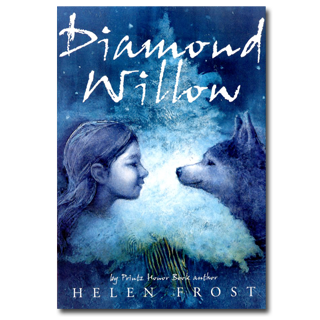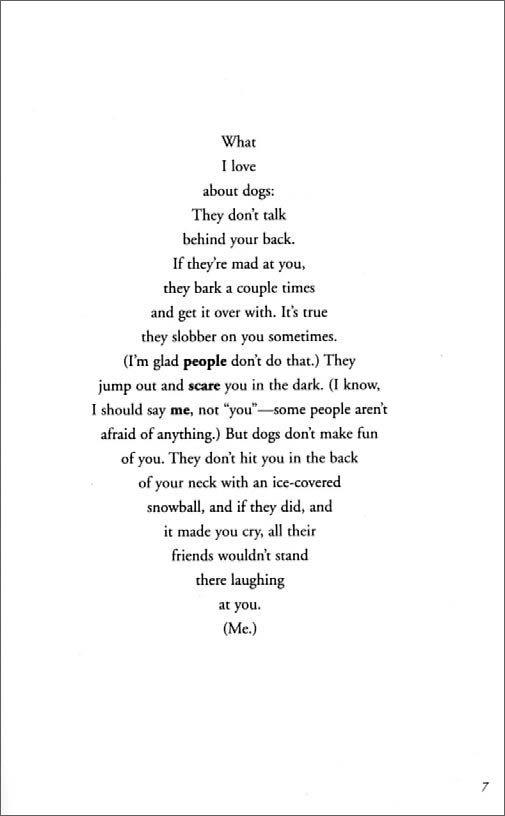
A FEW OTHER EVENTS FOR
JANUARY 3:
- Happy birthday Patricia Lee Gauch (The Knitting of Elizabeth Amelia); Tony Chen (A Child’s First Bible Storybook); J. Otto Seibold (Olive the Other Reindeer, Mind Your Manners, B.B. Wolf); and Chris Soentpiet (So Far from the Sea).
- It’s the birth date of Carolyn Haywood (1898–1990), "B" is for Betsey.
- It’s J. R. R. Tolkien Day, in honor of his birthday: J. R. R. Tolkien (1892–1973) The Hobbit, Lord of the Rings.
- In 1870, construction begins on the Brooklyn Bridge. Read Brooklyn Bridge by Karen Hesse and Brooklyn Bridge by Lynn Curlee.
Today marks Alaska’s statehood day, when in 1959 Alaska became the forty-ninth state in the Union. Of the myriad books for children that have been set in Alaska, my favorite, Diamond Willow by Helen Frost, appeared recently in 2008. Frost lived and taught for three years in a small Athabascan community in interior Alaska. Many years later she found the appropriate story, and poetic form, to pay tribute to those she had encountered there. Diamond Willow’s father is a science teacher whose ancestors migrated across Canada and the United States for about 160 years before he settled in Old Fork. Her mother is of Athabascan descent, people who have lived in Alaska for centuries. The spirits of their ancestors now inhabit the birds and animals of the area.
Most of the story is narrated from the point of view of twelve-year-old Diamond Willow. She loves her community and particularly the sled dogs that the family runs and keeps. Convincing her father and mother that she is old enough to handle them alone, she heads out to visit her grandparents, only to have tragedy strike. Their prize dog Roxy suffers an accident that renders him blind. Naturally, Diamond Willow feels responsible. So when her parents decide to euthanize the dog, because it will never run and lead sleds again, the girl takes matters into her own hands. She sets out, on the night of a terrible storm, to beg her grandparents to protect the dog.
Diamond Willow’s story is presented in diamond-shaped poems. Interspersed among these poems are prose pieces, narrated by the animals, which provide context for the events. On its most basic level, Diamond Willow tells the love story between a girl and her dog: she is willing to risk her own life to save this animal. But this is one of the rare books for children that also explores the spiritual realm. In it the love and longing of those now dead intersect with the struggles of the living. Imagine Thorton Wilder’s Our Town set in Alaska, and you have an idea of some of the power of this brief text, only 110 pages long.
As with everything Helen Frost writes, poetic form lies at the heart of her structure. Each diamond-shaped poem contains a message, hidden in darker ink. The form of this work was inspired by diamond willow sticks, which when polished reveal reddish-brown diamonds that have a dark center, the scar of a missing branch. As Helen writes in the introduction, “The scars, and the diamonds that form around them, give diamond willow its beauty, and gave me the idea for my story.”
In this rare look at a small town in interior Alaska, Diamond Willow provides a haunting, impossible-to-forget story—that lingers long after the reader closes the book.
Here’s a page from Diamond Willow:
Originally posted January 3, 2011. Updated for .














I am a huge fan of this book My students have strong reactions to it. One girl said, “This book is incredible, but please stop giving me books that are sad.”
Happy J.R.R. Tolkien Day!
I have the honor of introducing Ms. Frost at a conference coming up at the end of July and having just finished Diamond Willow, I’m even more excited about getting to introduce her. One of my favorite things about Helen Frost’s novels-in-verse is that they’re so physically involved. You’re not just reading paragraphs – you’re reading shapes and poems-within-poems and the actions of characters through the repetition of certain words. I feel I can read Diamond Willow or Keesha’s House a hundred times and see new elements to the story or characters each time I open the book again.
Diamond Willow was a favorite of both the mothers and daughters in my mother/daughter book club at the library.
Another book to add to my list. I never heard of this one, so thank you, Anita, for sharing about so many wonderful books. I love stories about Alaska (get it from my mother), and I can’t wait to read this one.
Beverly: Glad I could introduce it to you. This is a real Alaska story, true to both the people and the conditions of life.
Thank you for presenting this book. It is a new one for me and looks perfect to use in my classroom this winter as we continue to write, explore different authors and begin poetry Fridays. What a nice way to show poetry as story.
Picked up Frost’s Hidden on my way out of the library the other day and started reading it on the bus home, only stopped reading on the walk from the bus stop to the house because it was too dark to read. Sat down and finished it immediately before starting dinner. I handed it to my daughter as I headed to the kitchen and she (a professed hater of blank verse) couldn’t put it down either. Helen Frost does the most amazing things with poetry. Off to look for Diamond Willow right now.
Thank you, Anita, for shining your light on DIAMOND WILLOW, and thank you everyone, for these comments. Tess, it was a highlight of 2011 for me to hear your beautifully thought out introduction at Simmons. I love hearing all these different ways the book has been shared. And even HIDDEN gets some love on DIAMOND WILLOW’s page–thank you for that, Julie.
May 2012 be a book of great reading for all of us.
Haven’t heard of this book but it sounds great. I will have to check it out 🙂